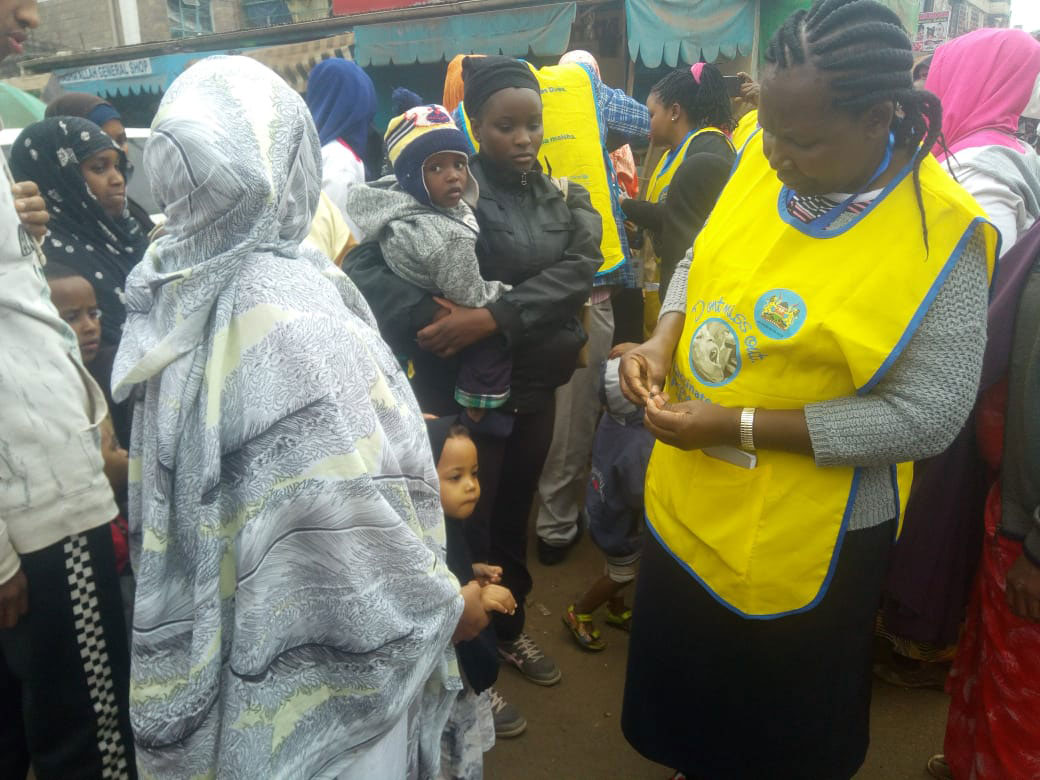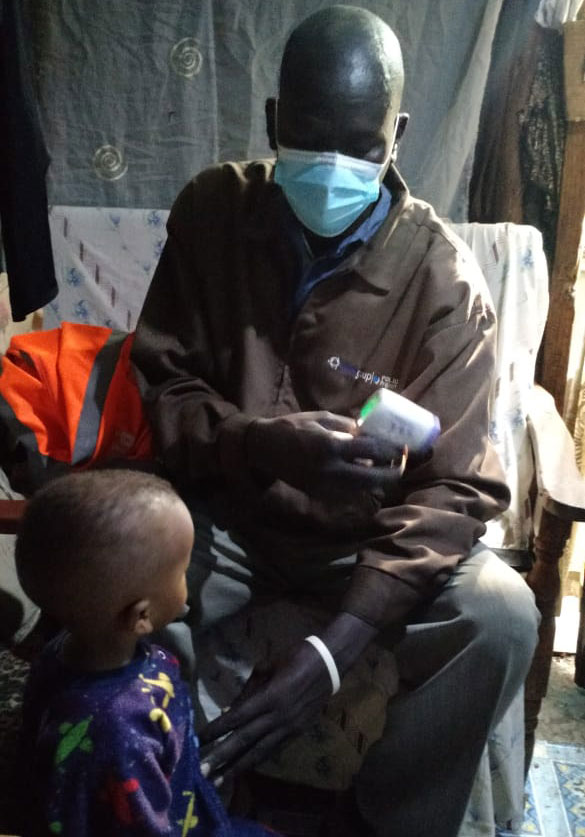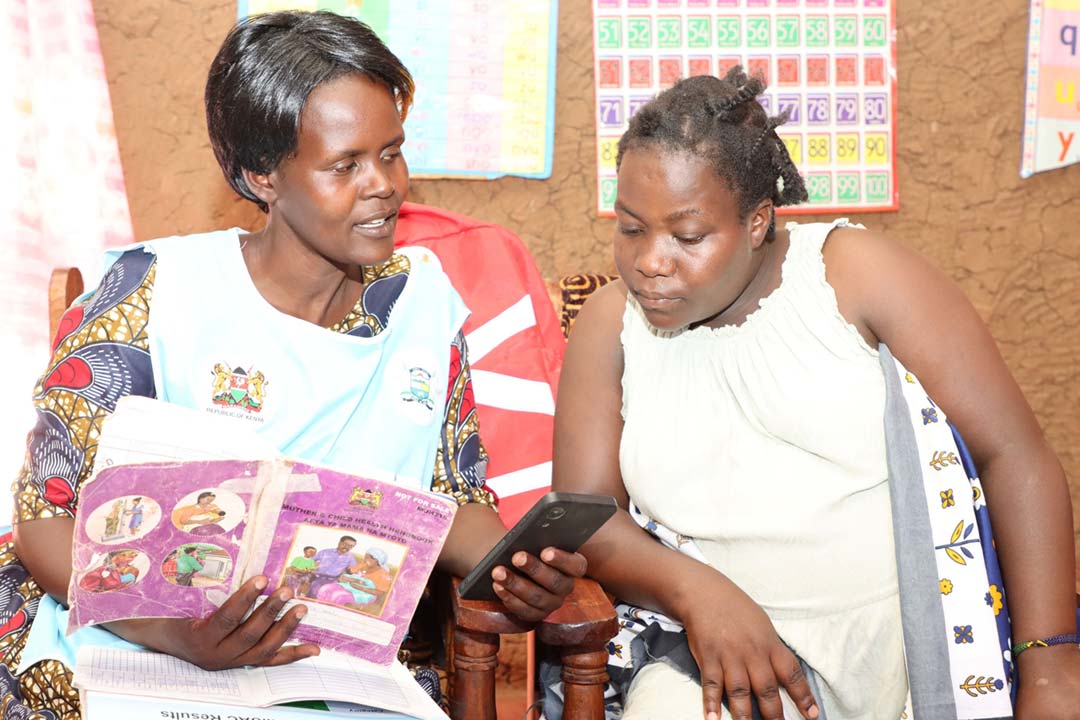Kenyans use their polio fighting network to tackle COVID-19
A rich network of community volunteers in Nairobi are putting skills they developed during anti-polio activities to work tackling COVID-19, and mobilising slum dwellers to get the COVID-19 vaccine.
- 5 July 2021
- 4 min read
- by Abjata Khalif

In Nairobi, Kenya's capital, 40% of people make their home in one of the city’s many slums. These informal settlements often lack crucial sanitation services: streams of raw sewage are sometimes found meandering down narrow lanes on which fast food is sold, and houses of corrugated sheets typically crowd the unplanned alleys, putting local residents at higher risk of infectious disease.
By the time the Kenyan government ended its lockdown, COVID-19 cases were in decline, and the community in the four Kamukunji slums registered for the COVID-19 vaccine in large numbers.
Immaculate Atieno, a community health volunteer in Nairobi, has a wealth of experience when it comes to reaching out to and mobilising the slum residents of Kamukunji, one of seventeen of Nairobi’s constituencies, encouraging them to vaccinate their children, and undertaking acute flaccid paralysis surveillance in the process.
Together with the band of 50 community health volunteers that she leads, Atieno makes three visits a week to Nairobi’s low-income slum settlements of Biafra, Airbase, Kwa Chief and Majengo. The work is not without hazard – these are embattled spaces. As rival gangs vie for territorial control in Kamukunji, muggings and armed robberies are often reported.
Atieno and her colleagues start work early, mapping out routes and areas of the slums to visit, as earmarked by Kenya’s Ministry of Health.
It helps that the group’s members hail from the different slums and, therefore, understand the landscape, including where and when to visit each area, and what to avoid. “It’s a risky mission. My team reaches 50,000 people, who are mainly poor Kenyans and refugees from Somalia and Ethiopia. We go from house to house and collect data while offering them education and linking them with the health authority” says Atieno.
Kamukunji sub county has just seven health facilities offering services to an estimated 700,000 people. “The health facilities have no staffing or medical capacity to reach the large population in Kamukunji slums and most of them shun health facility visits. This is one of the reasons the Kenya health authority and partners trained and deployed the volunteers and monitors to all corners of the slums,’’ says Asha Iddi, a community health monitor.
Have you read?
Atieno’s group forms part of that army of 1,542 community health volunteers and monitors trained by the Kenyan Ministry of Health and partners to undertake polio surveillance and promote routine immunisation. Their role is key in supplementing the Kenyan government’s efforts to eradicate polio by tracking suspected cases and infections from Somalia and the Kenya-Somalia border areas where the many refugees living in Kamukunji come from.
“Data collected by the community volunteers and monitors inform Kenya’s health authority’s ability to meet its acute flaccid paralysis surveillance targets, ensuring no fresh outbreaks are registered,” says Rebecca Nguli, a member of the community monitoring group and Chairlady of Kamukunji health network.

Photo credit: Abjata Khalif
Although Kenya has successfully eliminated the poliovirus, it remains at risk of re-emergences, recording two cases in 2018. Recently, the same health volunteers and monitors whose routine job it is to help prevent the resurgence of polio, have found that their rich network of contacts and slum mapping experience equip them to facilitate the containment of COVID-19.
Rising COVID-19 case numbers in the slum dwellings of Kamukunji forced the Kenyan government, in late 2020, to impose a lockdown. “The government mobilised us to reach out to every household and educate them on containment measures and importance of taking vaccines when it's available,” says Romano Omondi, a volunteer and member of Majengo slum social justice network.

Photo credit: Abjata Khalif
The first step was to contact parents who had taken their children for polio and other vaccinations. Next came a wider programme of house-to-house visits, where volunteers shared containment protocols, and explained the importance of taking the COVID-19 vaccine made available through the COVAX Facility.
Kenya has so far received more than one million doses of the AstraZeneca-Oxford vaccine out of its 3.56 million COVAX allocation, an additional 130,000 vaccines from the Democratic Republic of the Congo and 72,000 more doses from South Sudan. Both countries donated their COVID-19 vaccine doses to Kenya due to logistical and storage challenges in their countries.
By the time the Kenyan government ended its lockdown, COVID-19 cases were in decline, and the community in the four Kamukunji slums registered for the COVID-19 vaccine in large numbers. “Community health volunteers and monitors played a key role in bringing down the COVID-19 surge and preparing a pipeline of slum dwellers to take the COVID-19 jabs. Our efforts galvanised the health authority’s mission of reaching more people with the vaccine,’’ says Atieno.
More from Abjata Khalif
Recommended for you









